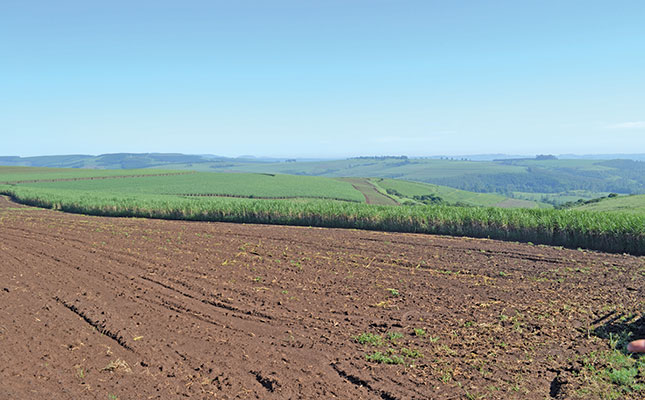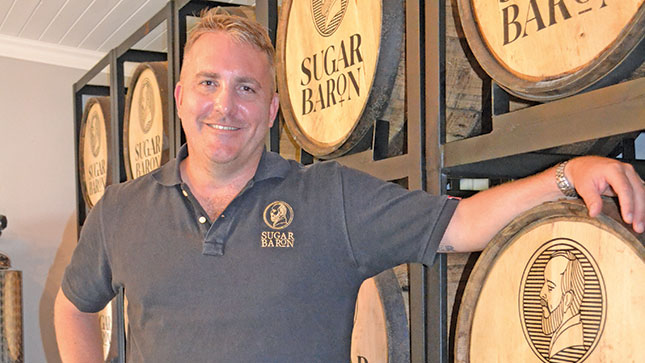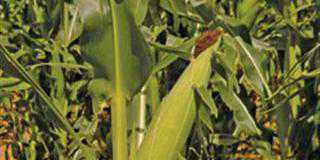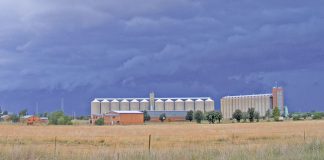
Photo: Susan Marais
As the old saying goes, when life gives you lemons, make lemonade. Better yet, when you inherit a sugar cane farm, make rum! And that’s exactly what second-generation farmer Brad O’Neill and his wife Marisa are doing at the Sugar Baron Craft Distillery on their family’s farm, Seafield, on the outskirts of Richmond in KwaZulu-Natal.
O’Neill’s father, Roger, bought the farm in 1993, and at that stage the exceptionally fertile land was being used for a mixed farming operation, where Jersey cattle, pigs, sugar cane and timber had been farmed for the previous 49 years. Over time, he converted it into a 100% sugar cane business.
The farm is between 930m and 950m above sea level and covers 293ha, of which 210ha are under sugar cane. The remaining 83ha are taken up by the valley floor, and 40ha of those are utilised as a game reserve, where the family keeps wildebeest, blesbok and zebra.
“We don’t earn an income from the game, but it’s nice to have these animals around,” says O’Neill.
Fertile land
The soil on the farm is amongst the very finest found anywhere, and is classified as having high potential. It has a high clay content, and also comprises Hutton soils and humic substances, so is rich in organic material.
“Our soil has a 45% to 50% clay content, so it holds water really well,” says O’Neill.
“Provided you receive rain, almost nothing can beat it.”
When Farmer’s Weekly visited Seafield in early January 2022, the farm had received over 1 000mm of rain the previous year, which led to one of O’Neill’s best spring planting seasons. His worst year was 2016, which was on the back of a two-year drought accompanied by severe frost.
Thanks to the thorough rainfall records kept by Seafield’s previous owners, O’Neill can tell that their average annual rainfall is declining; over the past 10 years, the mean was 834mm per annum.
Global warming has definitely made weather patterns more volatile, he says. “Last August, we were covered in an inch of snow. It was the first time in a hundred years that this happened.”
Heavy downpours have also been common, and it has become crucial to keep the soil covered and ensure that contours and waterways are substantial enough to contain the water.

Serving the soil
After eradicating the cane stool, O’Neill plants a green manure crop. “Sustainability is a vital part of our farming system,” he explains. “Whether a [crop] has been eradicated chemically or mechanically, it lies fallow for close to a year: no sugar cane is planted there for at least 10 months.”
Once the cane stool has been eradicated, soil samples are sent off for analysis, and any deficiencies in the soil are corrected with lime or gypsum and chicken manure.
“The soil sample tells us how much to apply,” he says. This is all disced into the soil before the green manure is planted. The latter doesn’t require fertiliser, as the chicken manure contains a high concentration of nutrients, specifically potassium and phosphorus, and aids in the prolific germination and growth of the crop.
“Generally, we never need to apply more than 3t of lime/ha, and we apply the same amount of chicken manure.”
Gypsum needs to be applied very rarely, as the topsoil is always looked after, and the subsoils seldom have acidity problems.
Once the land has been prepared, the green manure is planted; its sole purpose is to be ploughed back into the soil while still green in order to add organic matter.
O’Neill explains that they use a multispecies green manure crop. In winter, this consists of anything from black oats (Avena strigosa), rye (Secale cereale), peas (Pisum sativum), beans (Phaseolus vulgaris) and vetch (Vicia), to lupins (Lupinus spp.), barley (Hordeum vulgare), kale (Brassica oleracea var. sabellica), radish (Raphanus sativus) and turnip (Brassica rapa subsp. rapa).
“A [multispecies] crop performs better than a single [species], as each plant brings unique benefits.” For example, black oats are excellent at suppressing weeds and controlling nematodes.
In summer, he plants sunn hemp (Crotalaria juncea), which fixes nitrogen levels. “We also add more prolific growers such as forage sorghum (Sorghum spp.), and even sunflowers (Helianthus annus), babala (Pennisetum glaucum) and buckwheat (Fagopyrum esculentum). They all add a lot of organic matter that goes straight back into the soil.”
O’Neill admits that this exercise is costly. “The green manure seed alone costs around R1 000/ha, and another R1 500/ha is needed for input costs such as fuel and labour. And when you plant a 20ha field, the expenses pile up.”
But, he adds, it really is worth it; not only is he protecting his most valuable asset (the soil), but he is also increasing the quality and yield of his sugar cane.
“Our crops are healthier and more resistant to pests and diseases, especially over the long term.”
Another benefit of maintaining these high-potential soils is that, in instances of drought or flooding, the land has a shorter recovery period than that seen in neglected fields.
Vine inspiration
As a younger man, O’Neill didn’t plan on going into sugar cane farming. After leaving school, he completed a sports science degree at Stellenbosch University, where he met Marisa.
He also developed a love for wine while working in the industry as a student.
“At first, I focused on the marketing, sales and logistics side of the wine [business] while working for Siris Vintners Cape Wine Merchants. I then made the move to work for Hartenberg, Klein Constantia and Paul Cluver, which had formed a syndicate, and it was here that I learnt more about the art of viticulture and winemaking.”
After O’Neill’s father died, he and Marisa moved to the farm to support his mother, Gill. Though O’Neill would have loved to continue working in the wine industry, KwaZulu-Natal’s climate is not ideal for grape production.
It wasn’t until the couple visited Mauritius in 2014 that they realised the potential of making rum from sugar cane.
“We saw how they squeezed the sugar cane [and fermented the fresh juice] to make a style of rum called rhum agricole.”
Three years later, on a flight to Cape Town, O’Neill read an article on how to produce rhum agricole in the in-flight magazine.
Inspired by these experiences, he and Marisa signed up for a distillation course with Distillique in Gauteng, and he ordered the necessary distillation and fermentation equipment.
Rhum agricole vs traditional rum
The majority of rum sold across the globe is produced in the traditional way: it is distilled from fermented molasses, a by-product of raw sugar. Rhum agricole, however, is distilled directly from pressed sugar cane juice that has been fermented.
They also differ in taste. Classic rum can be considered big and bold, with a distinct flavour, while rhum agricole is lighter and more delicate. It can be served on the rocks, similar to single-malt whisky.
“There’s still a lot of education needed [when it comes to rhum agricole],” says O’Neill, adding that he and Marisa take pleasure in teaching the public about it.
Most of this education takes place during private rum tastings on Seafield Farm, the most popular of which accommodates a maximum of 12 guests.
“We also serve platters of tapas and charcuterie during the tastings, as they pair very well with our rums.”
Most of the tastings are performed in Sugar Baron’s Barrel Room, but they have plans to expand the agritourism side of the business, and this includes renovating the guest house on the property.
“Once the renovations are done, people will be able to stay over, and we might even be able to arrange rum tastings in the bush,” says O’Neill.
For the time being, however, the couple are enjoying the experience of running their business, where O’Neill is the farmer and distiller, and Marisa is in charge of administration, marketing and product innovation. She has also developed handmade rum fudge sauce, various types of rum-infused fudge, and other confectionery treats.
The pivotal role of milled sugar
Though the O’Neills are excited about their rum business, it uses only a small portion of their sugar cane crop.
“Last year we crushed only 1ha [about 100t] of sugar cane for liquor; the rest was sent to the sugar mill,” says O’Neill.
They hope, however, to increase their rum production tenfold. Having said that, they don’t want to crush more than 10% of their total crop for Sugar Baron, as they are determined that quality should trump quantity.
“At present, we only produce about 800ℓ of rum a month, and we enjoy being hands-on producers of craft rum.”
Maintenance issues at sugar mills, and their subsequent lack of capacity, as well as a globally low sugar price are amongst the issues that have been plaguing the South African sugar cane industry in recent years, and the O’Neills have not been able to escape this reality.
“The ‘dumping’ [of sugar] from abroad was also an issue,” explains O’Neill.
However, due to various interventions, such as when the International Trade Administration Commission announced in August 2018 that the dollar-based reference price trigger for import duties on sugar would be increased, the industry has recovered somewhat, and the local market now enjoys greater protection against cheap imports.
Earlier this year, the Shoprite Group and the South African Cane Growers’ Association formed a partnership that will see the former prioritise selling only locally produced sugar in its more than 1 180 Shoprite, Checkers, Checkers Hyper and Usave stores in South Africa, and promote the association’s Home Sweet Home campaign, which encourages consumers to buy South African sugar products.
No preferred variety
O’Neill has learnt the merit of producing consistently high-quality sugar cane. “When my father bought the farm, it was under contract with Illovo Sugar Eston,” he says. Then, in 2016, Tongaat Hulett made them a better offer, and they have been delivering sugar cane to the company’s Maidstone Mill ever since.
Since Tongaat is further away from the farm than Eston is, Tongaat Hulett subsidises the lion’s share of the transport costs, otherwise the move would not have been economically viable.
South African sugar cane growers are fortunate to have highly skilled researchers available to help them decide which are the best varieties to grown. However, O’Neill doesn’t favour one cultivar over another.
“Each has its own strengths and weaknesses. We still grow a few of the old varieties on the farm, and we’ve planted a few newly released ones as well.”
They have increased plantings of the N59 and N66 varieties fairly extensively, as both produce good quality and yield. Certain areas on the farm are still planted to N12, however, albeit in slightly rockier soil. This is because, despite being an old variety, it has good drought resistance and quality.
At Seafield Farm, a modern approach to agriculture is merged seamlessly with tried-and-tested knowledge, as both have a place to thrive on this vibrant farm.
Email Brad O’Neill at [email protected].













